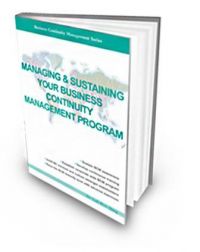Organization
1. Organization refers to the institution undertaking the BCM or Crisis Management or DR activities unless further qualified.



| |||||||||||||||||||||||||||||
2. Person or group of people that has its own functions with responsibilities, authorities and relationships to achieve its objectives.

Notes (1) : The concept of organization includes, but is not limited to, sole-trader, company, corporation, firm, enterprise, authority, partnership, charity or institution, or part or combination thereof, whether incorporated or not, public or private.
Notes (2) : For organizations with more than one operating unit, a single operating unit can be defined as an organization.
(Source: ISO 22301:2012 – Societal Security – Business Continuity Management Systems - Requirements) - clause 3.33
3. Group of people and facilities with an arrangement of responsibilities, authorities and relationships.
(Source: AE/HSC/NCEMA 7000:2021)
4. Group of people and facilities with an arrangement of responsibilities, authorities and relationships.
- example: Company, corporation, firm, enterprise, institution, charity, sole trader, association, agency or parts or combination thereof.
Notes (1) : The arrangement is generally orderly.
Notes (2) : An organization can be public or private.
Notes (3) : This definition is valid for the purposes of quality management system standards. The term "organization” is defined differently in ISO/IEC Guide 2. ([ISO 9000:2005, definition 3.3.1])
Notes (4) : An organization is a standing group or a temporary one established ad-hoc to perform a specific and limited task such as an incident response organization.
(Source: ISO 22320:2010 - Societal Security - Emergency Management - Requirements for Command and Control) - clause 3.12
5. Group of people and facilities with an arrangement of responsibilities, authorities and relationships.
Notes (1) : An organization can be a government or public entity, company, corporation, firm, enterprise, institution, charity, sole trade or association, or parts or combinations thereof.
(Source: ISO 22399:2007 – Societal Security - Guideline for Incident Preparedness and Operational Continuity Management) - clause 3.26
6. Group of people and facilities with an arrangement of responsibilities, authorities and relationships.
(Source: British Standard BS25999-1:2006 Code of Practice for Business Continuity Management)
7. An enterprise, a corporate entity; a firm, an establishment, a public or government body, department or agency; a business or a charity.
(Source: Business Continuity Institute - BCI)
8. A group of people and facilities with an arrangement of responsibilities,authorities and relationships.
EXAMPLE:Includes company,corporation,firm,enterprise,institution,charity,sole trader,association,or parts or combination thereof.
NOTE 1:The arrangement is generally orderly.
NOTE 2:An organization can be public or private.
NOTE 3:This definition is valid for the purposes of quality management system standards. The term 'organization' is defined differently in ISO/IEC Guide 2.
(AS/NZS ISO 9000)
(Source: HB 221:2004 Business Continuity Management)
9. A company,firm,organization,association,group or other legal entity or part thereof whether incorporated or not,public or private that has its own function(s) and administration.
(Source: Australia. A Practitioner's Guide to Business Continuity Management HB292 - 2006 )
